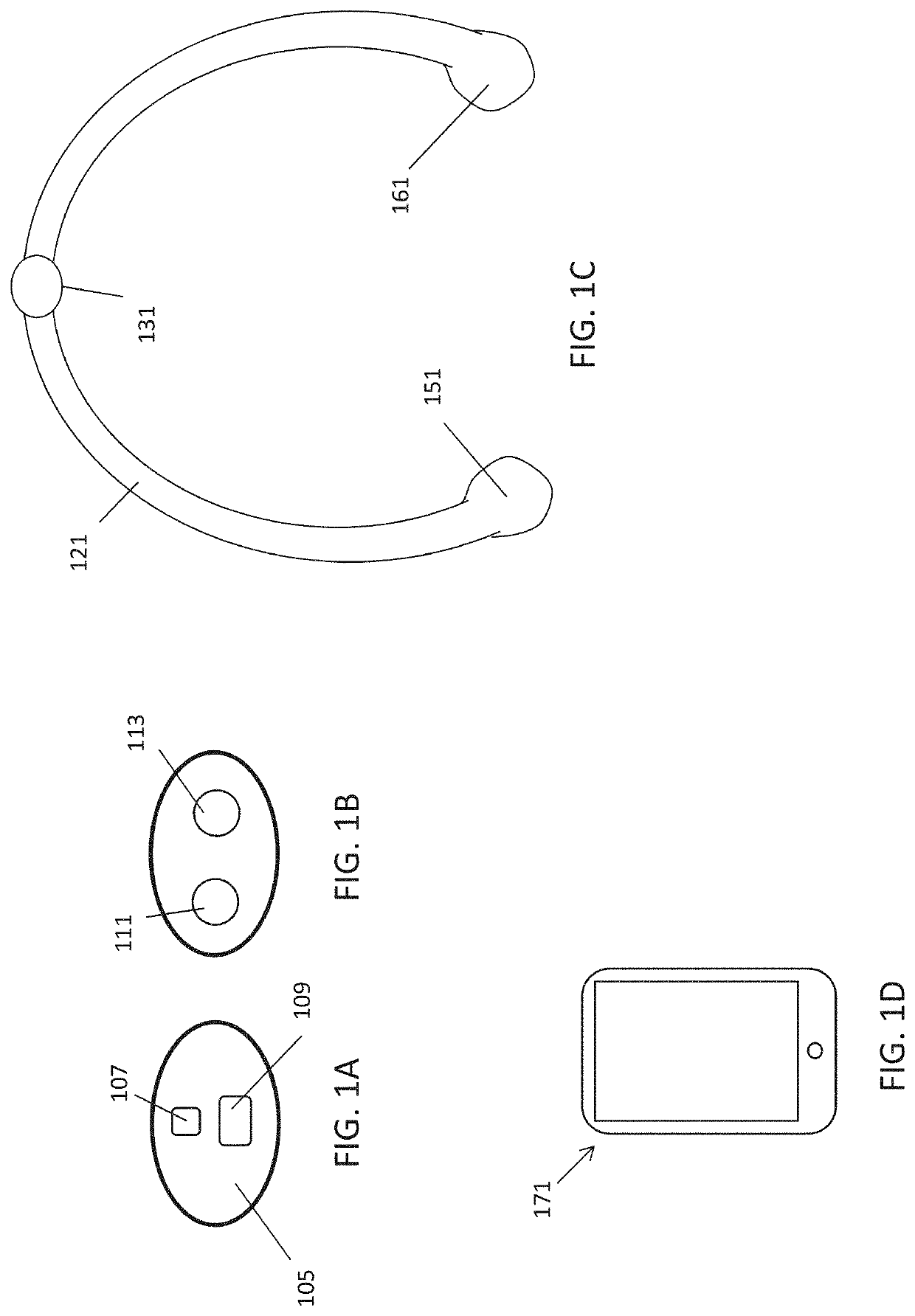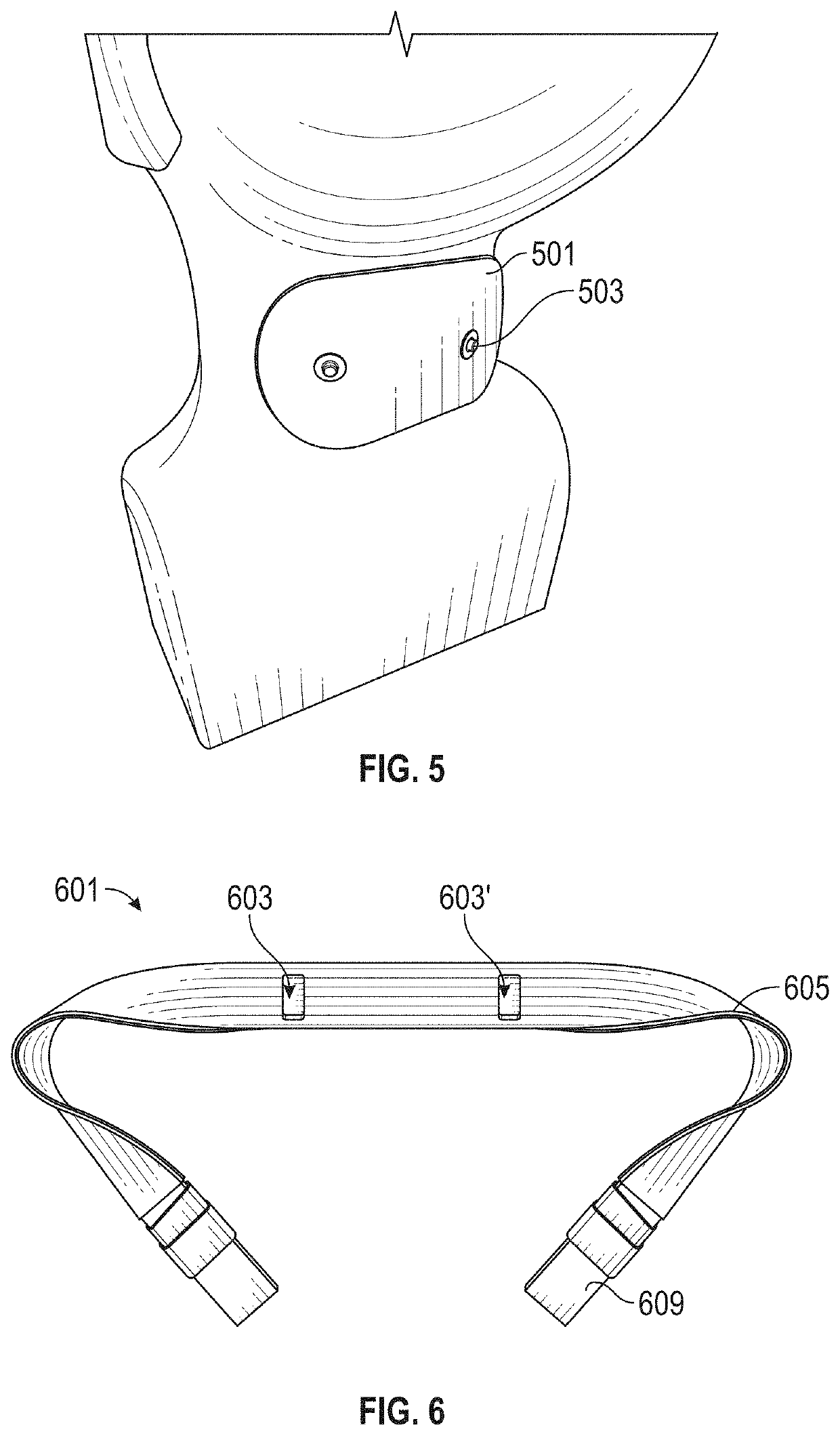Transdermal electrical stimulation at the neck
a transdermal electrical stimulation and neck technology, applied in the field of non-invasive neuromodulation of subjects, can solve the problems of inability to modulate a predetermined frequency, limited system design and delivery of tes waveforms, and inability to allow users to modulate predetermined frequency, etc., to achieve the effect of reducing discomfort and affecting both comfort and efficacy
- Summary
- Abstract
- Description
- Claims
- Application Information
AI Technical Summary
Benefits of technology
Problems solved by technology
Method used
Image
Examples
examples
[0148]FIGS. 24A-242D illustrate another example of a neck-worn TES apparatus that includes a pair of electrodes (or connectors to couple to electrodes) configured to contact the midline of the back of a user's neck. Although many of the examples shows and discussed above include a magnetic attachment between the electrodes, such as electrode patches that include an adhesive and / or a conductive gel, any of the apparatuses described herein that use an electrode may be configured to instead of additional use a dry electrode (without a conducive gel), a self-wetting electrode, a self-cleaning electrode and / or an integrated electrode that does not removably couple to an electrical contact.
[0149]FIG. 24A shows the back of a neck-worn TES apparatus 2400. This exemplary apparatus is a semi-rigid torc (having a u-shaped body) that is configured to be worn around the user's neck. In this example the pair of electrodes 2405, 2407 extend perpendicular to the long, curving axis of the torc body ...
PUM
 Login to View More
Login to View More Abstract
Description
Claims
Application Information
 Login to View More
Login to View More - R&D
- Intellectual Property
- Life Sciences
- Materials
- Tech Scout
- Unparalleled Data Quality
- Higher Quality Content
- 60% Fewer Hallucinations
Browse by: Latest US Patents, China's latest patents, Technical Efficacy Thesaurus, Application Domain, Technology Topic, Popular Technical Reports.
© 2025 PatSnap. All rights reserved.Legal|Privacy policy|Modern Slavery Act Transparency Statement|Sitemap|About US| Contact US: help@patsnap.com



